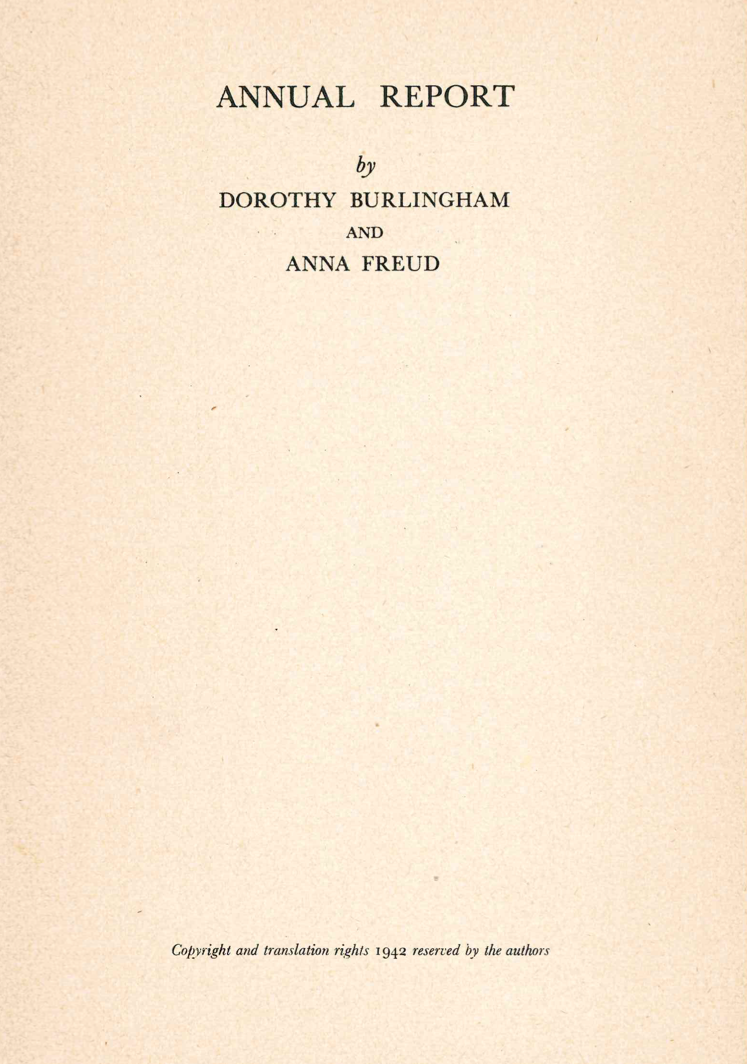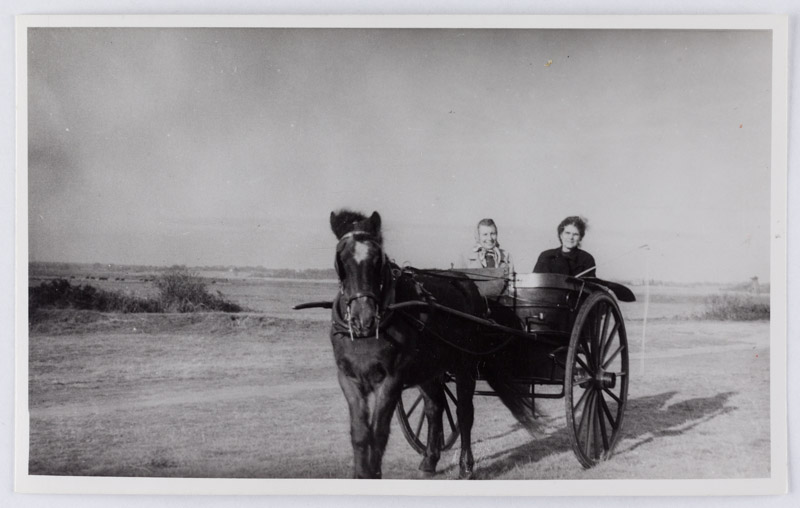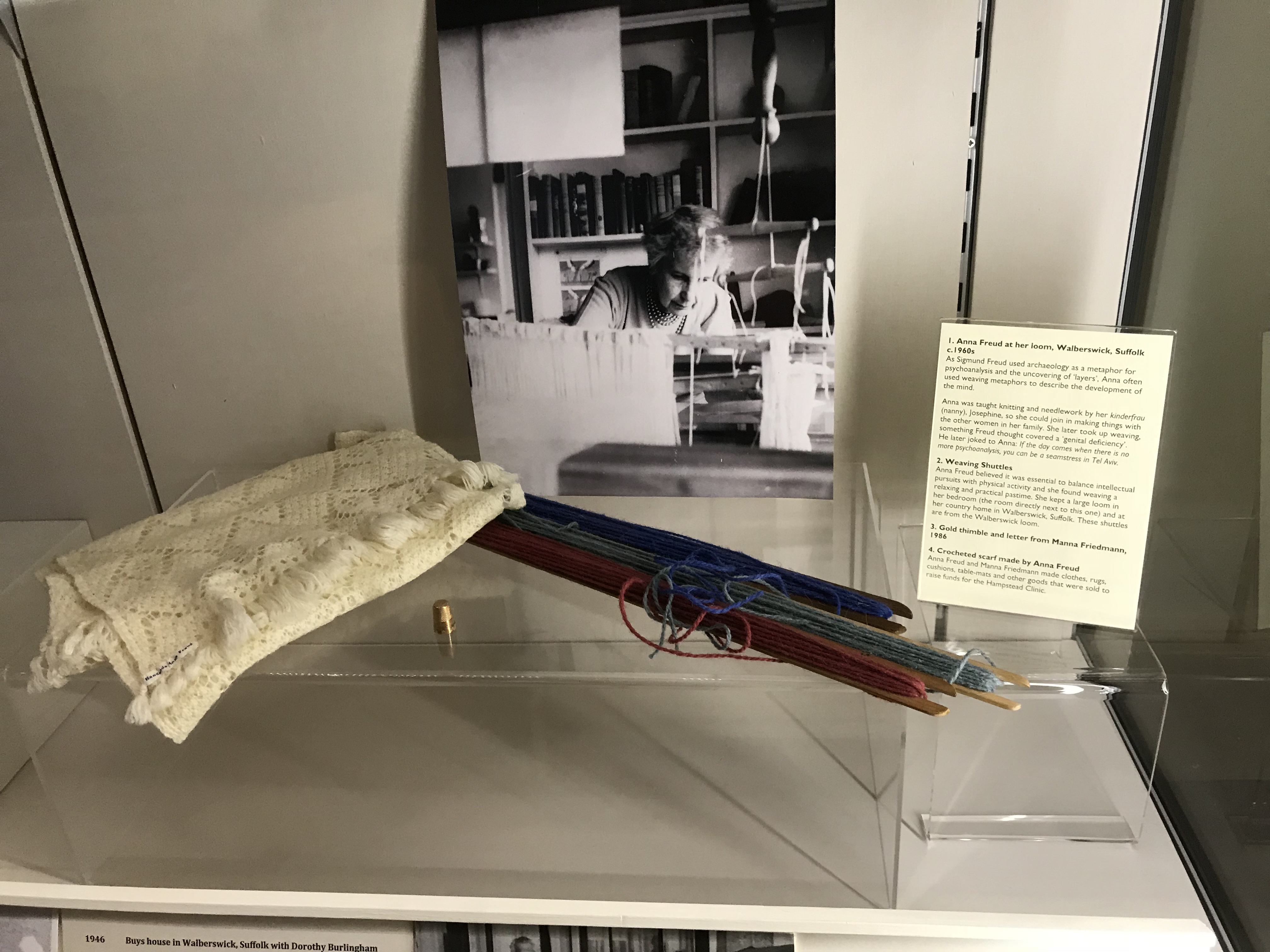Archive
https://archive.metromod.net/viewer.p/69/1470/object/5138-7555946
Archive
Anna Freud
- Anna
- Freud
- 03-12-1895
- Vienna (AT)
- 09-10-1982
- London (GB)
- Psychoanalyst
The psychoanalyst Anna Freud and her partner Dorothy Burlingham-Tiffany opened the War Nursery research and care facility in Hampstead in January 1941 under the impact of the bombing of London.
Word Count: 29

Anna Freud and Dorothy Burlingham, Jackson Nursery, Vienna, 1937 (© Freud Museum London). 
Dorothy Burlingham and Anna Freud. Annual Report of a Residential War Nursery. Hampstead Nursery, 1942, title page (Photo: Private Archive). 
Dorothy Burlingham and Anna Freud. Annual Report of a Residential War Nursery. Hampstead Nursery, 1942 (Photo: Private Archive). Page with addresses of Hampstead Nursery. 
Dorothy Burlingham and Anna Freud. Kriegskinder. Jahresbericht des Kriegskinderheims Hampstead Nurseries. Imago Publishing, 1949, cover (Photo: Private Archive). German version of Annual Report of a Residential War Nursery from 1942. 
Anna Freud and Dorothy Burlingham, Cork, 1949 (© Freud Museum London). 
Dorothy Burlingham and Anna Freud. Anstaltskinder. Imago Publishing, 1950, title page (Photo: Private Archive). German version of Infants without Families, 1943. 
Installation view from the Freud Museum London: Anna Freud at her loom, Walberswick, Suffolk, c. 1960s, Weaving Shuttles of Anna Freud, Crocheted scarf made by Anna Freud (Photo: Burcu Dogramaci, 2018. Courtesy of the Freud Museum London). 
Freud House at Maresfield Gardens (Photo: Burcu Dogramaci, 2018). Burlingham, Michael John. The Last Tiffany. A Biography of Dorothy Tiffany Burlingham. Antheneum/MacMillan, 1989.
Forrester, John. “Freudsches Sammeln.” “Meine ... alten und dreckigen Götter”. Aus Sigmund Freuds Sammlung, edited by Lydia Marinelli, exh. cat. Sigmund Freud-Museum, Vienna, 1998, pp. 21–35.
Freud, Sigmund. Tagebuch 1929–1939. Kürzeste Chronik (Roter Stern), edited by Michael Molnar and Freud Museum London, translated by Christfried Tögel, Stroemfeld, 1996.
Gay, Peter. Freud. A Life for Our Time. W.W. Norton & Co., 1988.
Jungk, Peter Stephan. Die Dunkelkammern der Edith Tudor-Hart. Geschichten eines Lebens. S. Fischer, 2015.
Kennedy, Hansi. “Children in Conflict. Anna Freud and the War Nurseries.” The Psychoanalytic Study of the Child, vol. 64, no. 1, 2009, pp. 306–319. Taylor & Francis Online, doi: 10.1080/00797308.2009.11800826. Accessed 4 June 2020.
Morra, Joanne. Inside the Freud Museums. History, Memory and site-responsive Art (International Library of Modern and Contemporary Art, 6). I.B. Tauris, 2018. Bloomsbury Collections, doi: 0.5040/9781350986831. Accessed 25 February 2021.
Schmölzer, Hilde. Frauenliebe: Berühmte weibliche Liebespaare der Geschichte. Promedia, 2009.
Spreitzer, Brigitte. “Anna Freuds literarische Texte. Einführung.” Anna Freud – Gedichte – Prosa – Übersetzungen, edited by Brigitte Spreitzer, Böhlau, 2014, pp. 11–88.
Welter, Volker M. Ernst L. Freud, Architect. The Case of the Modern Bourgeois Home (Space & Place, 5). Berghahn, 2012.
Young-Bruehl, Elisabeth. Anna Freud: A Biography (2nd ed.). Yale University Press, 2008.
Word Count: 199
Word Count: 3
My deepest thanks go to Freud Museum London for giving permission to reproduce the photos of Anna Freud and Dorothy Burlingham-Tiffany.
Word Count: 21
London, GB (1938–1982).
39 Elsworthy Road, Primrose Hill, London NW3 (residence, June 1938–September 1938); 20 Maresfield Gardens, Hampstead, London NW3 (residence, September 1938–1982); War Nursery, 13 Wedderburn Road, Hampstead, London NW3 (workplace, 1941–1945); War Nursery, 5 Netherhall Gardens, Hampstead, London NW3 (workplace, 1941–1945); Hampstead Child Therapy Course and Clinic (now Anna Freud Centre), 12 Maresfield Gardens, Hampstead, London NW3 (workplace, opened 1951).
- London
- Burcu Dogramaci. "Anna Freud." METROMOD Archive, 2021, https://archive.metromod.net/viewer.p/69/1470/object/5138-7555946, last modified: 21-06-2021.
-
Rosa SchapireArt HistorianLondon
The art historian Rosa Schapire, a supporter of Expressionist art, contributed to the presence of Expressionist art in England with loans and donations from her art collections rescued to London.
Word Count: 30
Golders Green CrematoriumCrematoriumLondonNumerous emigrants were cremated in Golders Green Crematorium after their death, including the gallerist Alfred Flechtheim, the psychoanalyst Anna Freud, the architect Ernö Goldfinger and the art historian Rosa Schapire.
Word Count: 30
Edith Tudor-HartPhotographerLondonThe Viennese photographer Edith Tudor-Hart emigrated to England in 1933 and made a name with her photographs focusing on questions of class, social exclusion and the lives of marginalised people.
Word Count: 29
Aid to RussiaExhibitionLondonThe Aid to Russia exhibition was organised in 1942 by the emigré architect Ernö Goldfinger and his wife, the painter Ursula Goldfinger, at their house in Hampstead.
Word Count: 26
Freie Deutsche KulturNewsletterLondonThe Free German League of Culture was an association of emigrant artists and authors who organised exhibitions, concerts and lectures. The events were announced in the Freie Deutsche Kultur newsletter.
Word Count: 30